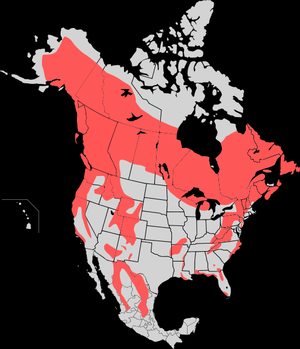The Conservation Department asks hunters who harvest deer in six north-central Missouri counties during opening weekend of firearms deer season to submit samples for CWD testing.
JEFFERSON CITY Mo – As part of it ongoing efforts to monitor Missouri’s free-ranging deer for chronic wasting disease (CWD), the Missouri Department of Conservation (MDC) is asking hunters for help. Hunters who harvest yearling and adult deer during opening weekend of firearms deer season (Nov. 13-14) in Linn, Chariton, Macon and parts of Sullivan, Adair and Randolph counties are encouraged to take their deer to the following collection sites for tissue sampling between 7 a.m. and 9 p.m. Saturday and Sunday.
LINN CO
King Processing & Catering, 33181 Hwy WW in Marceline
Meadville Meat Locker, 101 E Gentry St. in Meadville
Mussel Fork Conservation Area, 10 miles east of Brookfield and south of US Hwy 36 near Bucklin (look for signs)
MDC Brookfield Maintenance Center, 115 Pershing Road in Brookfield
CHARITON CO
Salisbury Meat Market & Processing, 29047 Market Lane in Salisbury
MACON CO
Special D Meats, 30637 Lake St. in Macon
Buck Ridge Butcher Shop (Saturday Only), 11245 Grouse Ave. in La Plata
Floral Hall-Macon County Fairgrounds, 1303 S. Missouri St. in Macon
SULLIVAN COUNTY
Tucker's Grocer & Processing, 355 W Front St in Green Castle
“The process of collecting tissue samples will take only a few minutes and involves removing lymph nodes from the head,” said MDC Resource Scientist Jason Sumners. “The tissue sampling will not reduce the food or taxidermy value of deer.”
Sumners, a biologist with expertise in deer management, added that hunters throughout the state who encounter or harvest a deer in poor condition with no obvious injuries should contact their local conservation agent or MDC office. If appropriate, the deer will be tested for CWD.
He noted that hunters are vital partners in keeping Missouri’s deer herd healthy, along with the supporting the state economy.
“Adult deer have no widespread natural predators in Missouri so hunting is the primary way to control the population,” he said. “Our nearly 500,000 Missouri deer hunters spend more than $750 million directly related to deer hunting each year. This adds up to over $1 billion in overall business activity and supports more than 11,000 jobs.”
The voluntary hunter-sampling effort is part of the MDC’s response to a single case of CWD confirmed by the Missouri Department of Agriculture (MDA) in a captive white-tailed deer at a private hunting ranch in Linn County in February. This is the first and only case of CWD detected in the state.
CWD is a neurological disease found in cervids, such as deer, elk and moose. It attacks the brain and results in extreme weight loss, excessive salivation, stumbling, tremors and eventually death. CWD spreads through animal-to-animal contact and through soil-to-animal contact. The clinical tests used to detect CWD in white-tailed deer require lymph node or brain tissue.
The Missouri Department of Health and Senior Services (MDHSS) says that there is no evidence CWD can infect people. The MDA says that current research shows there is no evidence CWD can spread to domestic livestock, such as sheep or cattle.
While CWD is new to Missouri, the MDC and MDA have been testing for it for years. The agencies formed a state Cervid Health Committee in 2002 to address the threat of CWD to Missouri. This task force is composed of conservation agents, veterinarians and animal health officers from MDC, MDA, MDHSS and the US Department of Agriculture.
With the help of hunters, the MDC has tested more than 26,000 free-ranging deer for CWD from all parts of the state since 2002 with no cases found.
Sumners said that Missouri residents who hunt in other states should be aware of a new regulation regarding chronic wasting disease. The MDC now requires any hunter who brings a deer, elk or moose into Missouri with the head or spinal column attached to report the carcasses’ entry by calling 1-877-853-5665 within 24 hours of entering the state. If the head or spinal cord is intact on the animal, the hunter cannot process the meat or the trophy mount and must take the carcass to a licensed meat processor or taxidermist within 72 hours of entry. Meat processors and taxidermists are required to dispose of the spinal cord and other parts in a properly permitted landfill. Hunters do not need to report if they simply bring back meat, hides, antlers, teeth, skulls or skull plates with no brain tissue attached.
For more information, refer to page 3 of the “2010 Fall Deer & Turkey Hunting Regulations and Information” booklet. The booklet is available where permits are sold, including MDC offices, and online at www.missouriconservation.org.
















